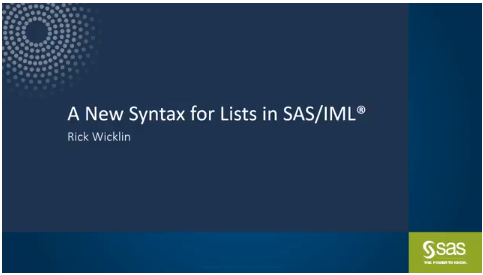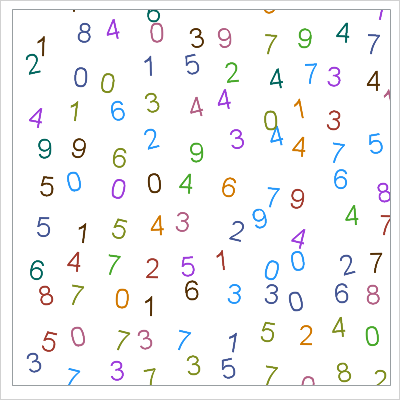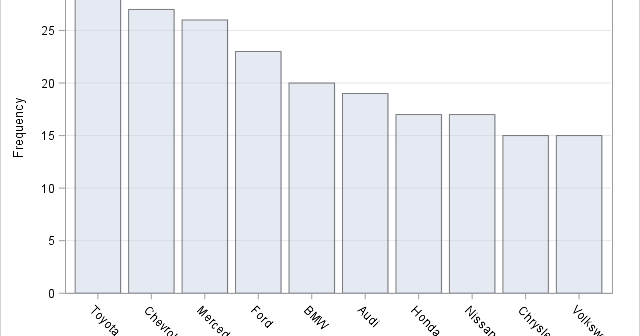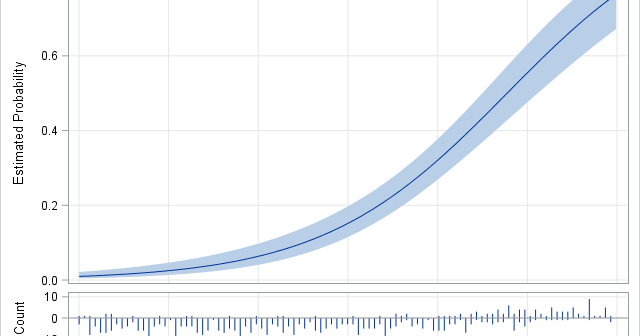The DO Loop
Statistical programming in SAS with an emphasis on SAS/IML programs
In SAS, the reserved keyword _NULL_ specifies a SAS data set that has no observations and no variables. When you specify _NULL_ as the name of an output data set, the output is not written. The _NULL_ data set is often used when you want to execute DATA step code

I recently recorded a short video about the new syntax for specifying and manipulating lists in SAS/IML 14.3. This is a video of my Super Demo at SAS Global Forum 2018. The new syntax supports dynamic arrays, associative arrays ("named lists"), and hierarchical data structures such as lists of lists.

The SURVEYSELECT procedure in SAS 9.4M5 supports the OUTRANDOM option, which causes the selected items in a simple random sample to be randomly permuted after they are selected. This article describes several statistical tasks that benefit from this option, including simulating card games, randomly permuting observations in a DATA step,

Years ago, I wrote an article about how to create a Top 10 table and bar chart. The program can be trivially modified to create a "Top N" table and plot, such as Top 5, Top 20, or even Top 100. Not long after the article was written, the developer

A previous article showed how to use a calibration plot to visualize the goodness-of-fit for a logistic regression model. It is common to overlay a scatter plot of the binary response on a predicted probability plot (below, left) and on a calibration plot (below, right): The SAS program that creates

The SAS language provides syntax that enables you to quickly specify a list of variables. SAS statements that accept variable lists include the KEEP and DROP statements, the ARRAY statement, and the OF operator for comma-separated arguments to some functions. You can also use variable lists on the VAR statements
